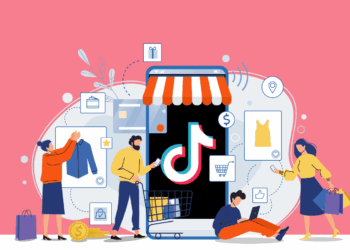In an increasingly digital world, the idea of starting an online business is more accessible and appealing than ever before. The internet has democratized entrepreneurship, allowing anyone with an idea and an internet connection to reach a global audience. Whether you want to sell products, offer services, or create digital content, an online business provides unparalleled flexibility, low overhead costs, and the potential for a global reach. However, building a successful online venture requires more than just a great idea; it demands strategic planning, persistent effort, and a deep understanding of the digital landscape. This guide will walk you through the essential steps and considerations for launching a thriving online business.
Niche Selection and Market Research

Before you write a single line of code or create a product, the most critical step is to validate your business idea. A great online business solves a problem or fills a gap in the market.
- 1. Find Your Niche: A niche is a specific, well-defined segment of a larger market. Instead of trying to sell general t-shirts, you could focus on t-shirts for vintage car enthusiasts. This specialization makes it easier to target your marketing efforts, build a loyal community, and stand out from the competition.
- 2. Conduct Thorough Market Research: Once you have a niche, you need to understand your target audience. Who are they? What are their pain points? Where do they hang out online? Tools like Google Trends, social media analytics, and competitor analysis can provide invaluable insights. This research helps you create products or services that genuinely meet a need.
- 3. Validate Your Idea: Don’t build a product and hope people will buy it. Start with a minimum viable product (MVP) or a simple landing page to gauge interest. You could offer a pre-sale, collect email addresses, or run a small ad campaign to see if there’s a demand for your idea before you invest significant time and money.
Website and Branding
Your website is the storefront of your online business, and your brand is its personality.
- 1. Choose Your Platform: The platform you choose to build your website on will impact its functionality and your management of it.
- A. E-commerce Platforms: For selling physical or digital products, platforms like Shopify, BigCommerce, and WooCommerce (for WordPress) are excellent choices. They provide all the tools you need for an online store, from product listings to payment processing.
- B. Content Management Systems (CMS): If your business is service-based or centered on content, a CMS like WordPress is highly versatile. It allows you to create a professional blog, a portfolio site, or a booking system with a wide range of plugins.
- 2. Develop Your Brand Identity: Your brand is more than just a logo; it’s the story you tell and the feelings you evoke. Define your brand’s voice, color palette, and visual style. A strong, consistent brand helps you build trust and recognition with your audience.
- 3. Optimize for User Experience (UX): A user-friendly website is crucial for converting visitors into customers. Your site should be easy to navigate, fast-loading, and mobile-responsive. Make sure your call-to-action buttons are clear and prominent. A seamless user experience directly impacts your sales and reputation.
Driving Traffic to Your Business
Even the best online business will fail without a steady stream of visitors. Driving traffic is an ongoing process that requires a multi-faceted approach.
- 1. Content Marketing: Creating valuable, engaging content is one of the most effective ways to attract organic traffic. A blog, YouTube channel, or podcast can position you as an expert in your niche. By providing free value, you build trust and authority, which can lead to sales down the line.
- 2. Search Engine Optimization (SEO): SEO is the practice of optimizing your website to rank higher in search engine results. This involves using relevant keywords, building high-quality backlinks, and creating a strong site structure. A high ranking on Google can be a massive source of free, targeted traffic.
- 3. Social Media Marketing: Social media is an essential tool for building a community around your brand. Choose the platforms where your target audience is most active and create content tailored to each platform. Use social media to engage with your followers, run contests, and drive traffic to your website.
- 4. Paid Advertising: Platforms like Google Ads and Meta (Facebook/Instagram) Ads allow you to target specific demographics with highly effective ad campaigns. Paid advertising can provide a quick boost in traffic and sales, especially in the early stages of your business. However, it requires careful management to ensure a positive return on investment.
The Sales Funnel and Customer Conversion

Getting visitors to your site is only half the battle. The next step is converting them into paying customers.
- 1. Build a Sales Funnel: A sales funnel is a series of steps designed to guide a visitor from initial awareness to a final purchase. The classic model includes four stages: Awareness, Interest, Desire, and Action. Your website, email marketing, and social media content should all be designed to move customers through this funnel.
- 2. Offer Something of Value: Don’t just ask for a sale right away. Offer a free resource—an e-book, a checklist, a webinar—in exchange for an email address. This allows you to build a relationship with potential customers over time through email marketing.
- 3. Streamline the Checkout Process: A complicated or slow checkout process is a major cause of abandoned carts. Make sure your checkout is simple, fast, and secure. Offer multiple payment options and be transparent about shipping costs and timelines.
- 4. Provide Excellent Customer Service: Exceptional customer service can turn a one-time buyer into a lifelong advocate. Respond to inquiries promptly, be transparent about any issues, and go the extra mile to make your customers happy. Positive reviews and word-of-mouth are invaluable for an online business.
Long-Term Growth and Sustainability
A successful online business is not a sprint; it’s a marathon. For long-term growth, you need to focus on sustainability and continuous improvement.
- 1. Analyze Your Data: Use tools like Google Analytics to track your website traffic, user behavior, and conversion rates. Understanding your data allows you to make informed decisions about what’s working and what’s not, helping you optimize your strategies for better results.
- 2. Diversify Your Revenue Streams: Don’t put all your eggs in one basket. If you sell products, consider adding a digital download, a subscription service, or an affiliate program. Diversifying your income sources protects you from market fluctuations.
- 3. Build a Community: A loyal community is the lifeblood of a sustainable online business. Use social media groups, email newsletters, and forums to foster a sense of belonging. A strong community will provide feedback, spread the word about your brand, and become your biggest cheerleaders.
Conclusion
The journey of starting and growing an online business is a powerful blend of creativity, strategy, and resilience. It represents a modern-day frontier where passion can be transformed into profit and a niche idea can find a global audience. The accessibility of digital tools has lowered the barriers to entry, but the competition for attention has never been fiercer. Success is not handed out; it is earned through a methodical approach, from the initial validation of an idea to the continuous optimization of a mature business.
The future of business is undoubtedly online, and the opportunities are only growing. As an entrepreneur, your ability to adapt to new technologies, understand your audience, and build genuine connections will be your greatest assets. The online world is a dynamic ecosystem where search algorithms evolve, social media platforms rise and fall, and consumer behaviors shift. To thrive, you must view your online business as a living entity that requires constant care and attention.
Ultimately, a successful online business is more than a transactional platform; it’s a valuable entity that provides solutions, builds relationships, and contributes to a community. Whether you’re selling a product that simplifies a daily task, providing a service that saves time, or creating content that enriches lives, your online venture has the power to make a tangible impact. The effort you put in today—in research, branding, marketing, and customer service—is the investment that will pay dividends for years to come. The digital world is your oyster; all you need to do is start shucking.









